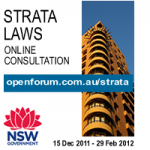Cracking the free range fraud
The Federal Government is currently creating a national egg standard to define what ‘free range’ exactly means. Emmanuel Giuffre of animal protection institute Voiceless says now is the time to lobby and demand that free range means that layer hens actually go outside.
After over a decade of lobbying, Treasury is finally coordinating the development of a national free range egg standard. Treasury’s decision was prompted by Australian consumers perpetually getting ripped off by dodgy free range claims.
Consumer advocacy group CHOICE estimates that Australians are losing between $21 and $43 million (million!) a year on eggs that are marketed as free range, but should more accurately be labelled ‘barn’ or ‘access to range’. Some so called ‘free range’ producers have even been selling cage eggs to consumers, compelling the ACCC to take action – and rightly so.
Over the last five years, six producers have been penalised under the Australian Consumer Law for misleading and deceptive conduct. It’s not because the ACCC is obsessive about eggs – it’s because the industry is making a killing out of duping consumers who pay a premium for a higher welfare product.
From these court cases, the Federal Court provided a common sense test for free range systems. That is, if producers want to label their eggs ‘free range’, then their eggs must come from systems where most birds have access, and actually do, go outside on most ordinary days. If producers can’t satisfy this requirement, then they should label their products differently – simple.
Consumer groups, genuine free range farmers, and the industry regulator all support this definition, because it makes sense. To the average consumer, ‘free range’ doesn’t mean that birds simply have a door to access the outdoors, which, let’s be honest, they probably couldn’t use anyway given they’re crammed in a shed with thousands of their flock mates.
No, consumers expect their free range eggs to come from birds that are actually ranging freely. They’re exhibiting their natural behaviours, which includes wing flapping, nesting, preening, foraging and dust bathing.
While all of the above should be more than enough to justify a national standard on free range standards, on the 11 January Senator David Leyonhjelm argued that consumer expectations have somehow been overlooked in these discussions.
The Senator cherry picked from one Big Ag survey which showed consumer support for their high stocking densities of 10,000-20,000 birds per hectare, while ignoring the surveys from CHOICE, the ACCC and animal protection groups which show that consumers actually expect much lower stocking densities.
In fact, survey data shows that consumers expect a free range stocking density of less than 1,500 birds per hectare, which is consistent with the Government endorsed Model Code of Practice for the Welfare of Animals: Domestic Poultry.
Even more convincing is recent survey data from Humane Society International, which revealed that many Queenslanders stopped purchasing free range eggs because the brand lacked credibility. According to the survey results, the main cause of this credibility crises stems from the 2013 decision by Queensland regulators to increase the maximum stocking density of free range farms from 1,500 birds per hectare to a whopping 10,000 birds per hectare.
Spruiking industry claims that birds are better off in cages is irrelevant, outdated nonsense. This isn’t a debate about cage vs free range systems, it’s about ethical consumers being taken for a ride by unscrupulous business practices.
Obviously, genuine free range farmers are concerned to set the free range record straight. These are small-scale, family run farmers who have developed their production systems consistent with consumer expectations and the Model Code. For far too long, these farmers have watched as large-scale and intensive producers have mislead consumers; bending the free range rules to their advantage and driving genuine competitors out of the market.
And with ambassadors like Leyonhjelm at their side, Big Ag are set to do it again – this time by setting a national, legally enforceable ‘free range’ standard that suits their intensive production systems.
Well, now is the time to bring some confidence back to a broken system. Treasury and state and territory Consumer Affairs Ministers have an opportunity to establish truthful labelling legislation that will protect consumers, genuine free range farmers and animal welfare. You can have your say in that process here.
While this certainly isn’t an endorsement for the practices of free range farming, which has its own suite of animal welfare issues, what is important is that consumers know what they are paying for.
This means that requiring that free range eggs come from birds that actually go outside, and that are not de-beaked as chicks, should be the bare minimum of a free range standard. Anything less will be a cock-up.
Emmanuel Giuffre is Legal Counsel of Voiceless, the animal protection institute.











